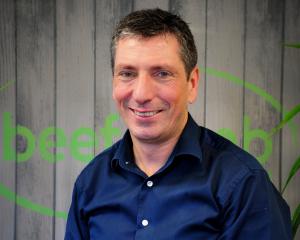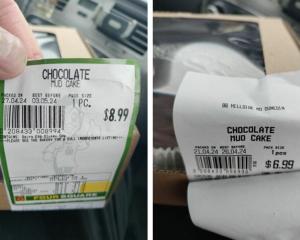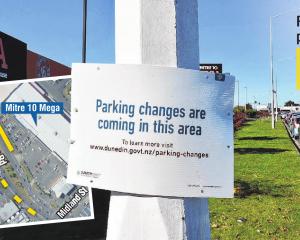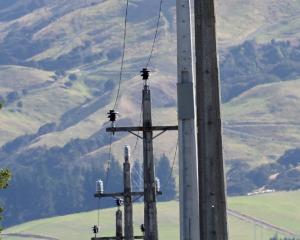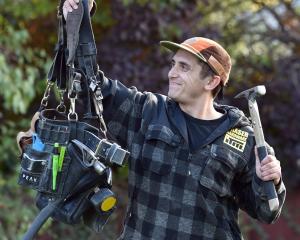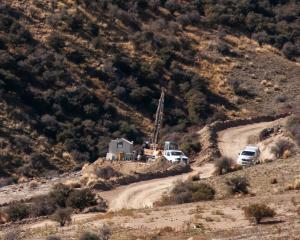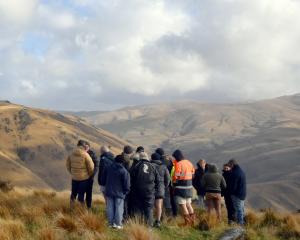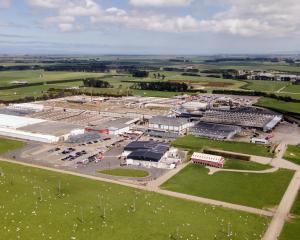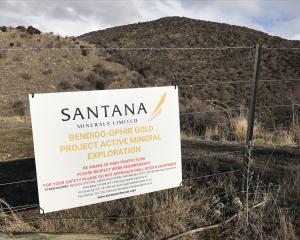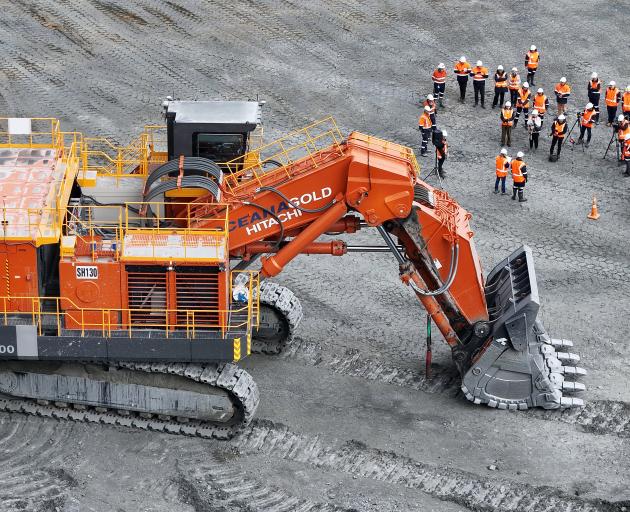
The minister visited Macraes mine yesterday, which is owned by OceanaGold, to unveil a new 360-tonne Hitachi EX3600 electric shovel — the first of its kind in New Zealand.
Speaking to the Otago Daily Times after taking a more than 10-minute test drive in the ‘‘Goliath machine’’, Mr Jones said it was the first time he had seen a contraption of this scale in person.
‘‘It’s bigger than Ben-Hur, literally,’’ he said.
‘‘Massive piece of kit and a revelation as to how much dirt it can move around.’’
It was a ‘‘bit of a mind-teaser’’ that it ran completely off electricity, and Mr Jones admitted he was a bit concerned about inadvertently running over the cord.
‘‘I had fried eggs for breakfast but I don’t want to fry myself bro.’’
OceanaGold had stepped up to the plate, which was a mark of pride for both the mining workforce and ‘‘a tick for Otago’’, he said.
‘‘Macraes has for a long period of time essentially been the backbone of our goldmining industry.
‘‘I’m confident there will be other sites, but I don’t deprecate at all the long-standing investment and involvement that the leaders have had.
‘‘I actually want to see not only Otago embracing it more effusively, but New Zealand helping me rehabilitate the place of pride that the extractive sector should have as we seek to diverse our economy.’’
Mr Jones said the mining sector was an industry that rewarded passion. Geologists had told him there were many other minerals that could be exploited, he said.
‘‘I think with a climate smart approach, respect for outcomes of sustainability, we’ll see a lot more investment.’’
Mr Jones said he had a natural allergic reaction to ‘‘banshee-like hysteria’’ and indiscriminate regulation, and was a great believer that science and technology would give us the answers for decarbonisation.
But an economic surplus needed to be generated to afford smarter climate outcomes, which would be ‘‘a challenge for the younger generation’’.
Macraes Mine open pit manager Pieter Doelman said the electric shovel, along with its electrical infrastructure, brought the total cost of the project to about $10 million.
Electricity was supplied to Macraes along a 6600V line from Ranfurly, and the shovel was likely the third biggest user of this power supply behind the mine’s processing plant and underground ventilation pumps, he said.
It plugged straight into the power supply via 1km of trailing cable, with ‘‘exactly the same principle’’ as an oversized vacuum cleaner.
‘‘We think that we can happily run it to about 2.5km worth of cable.’’
The machine weighed 360 tonnes with a 1200 kilowatt motor and a 22 cubic metre bucket, which could hold about 38 tonnes per scoop.
Owning the electric shovel elevated Macraes’ standing in Australasia, as the technology was not common in this part of the world.
‘‘As far as I know, this is only the second electric hydraulic machine in Australasia.
‘‘Unfortunately, the Australians beat us to it but of course we think our one is better.’’


